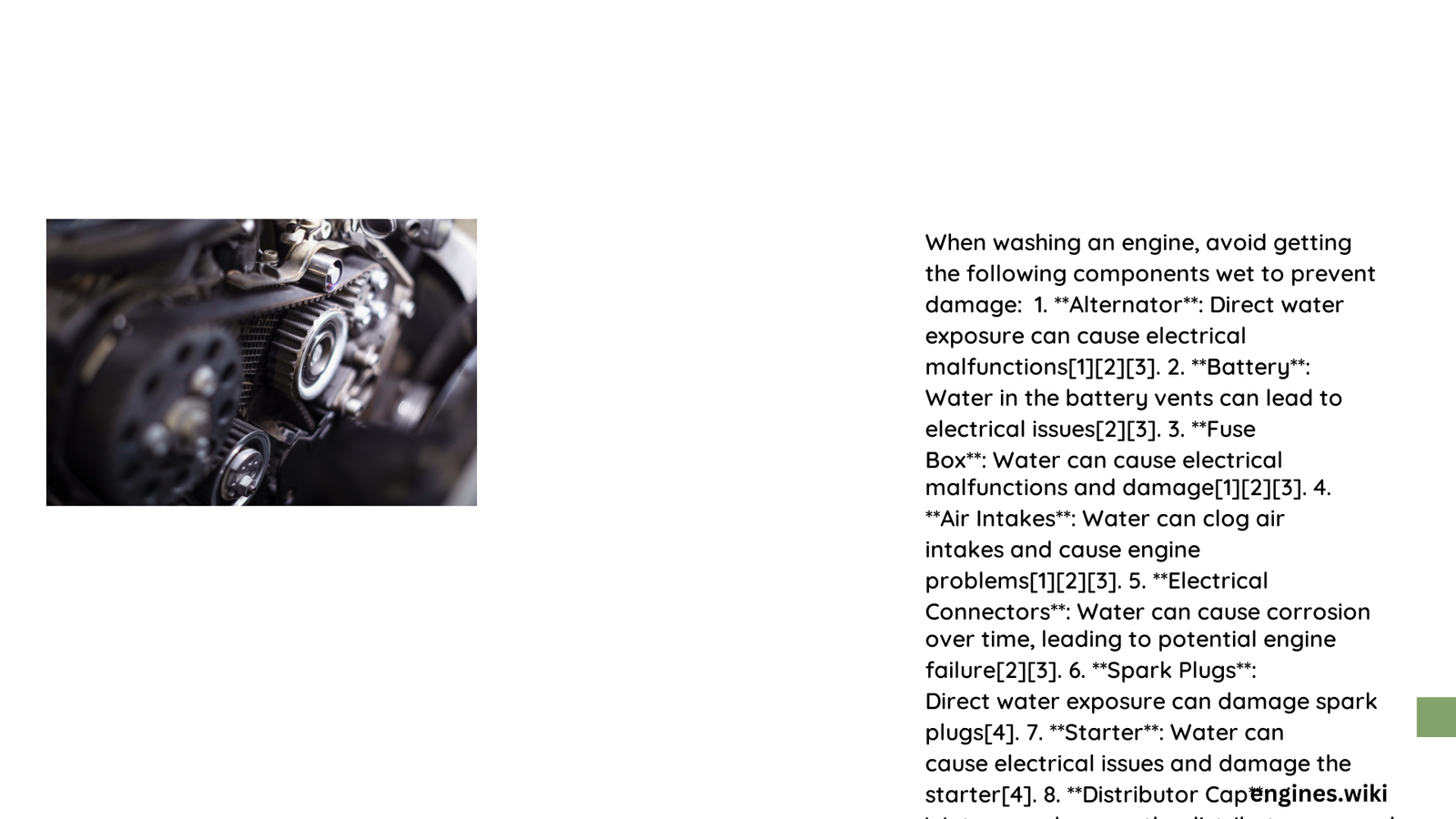When washing your vehicle’s engine, understanding what components must remain dry is crucial to prevent potentially expensive electrical and mechanical failures. Water exposure can compromise sensitive systems, leading to short circuits, corrosion, and complex repair requirements. Professional mechanics and automotive experts emphasize strategic protection of critical engine components during cleaning to maintain vehicle performance and longevity.
What Electrical Components Risk Damage from Water?
Water exposure can devastate multiple electrical systems within your vehicle’s engine compartment. Here are the most vulnerable components:
Electrical Wiring Harness Protection
| Component | Water Damage Risk | Recommended Protection |
|---|---|---|
| Wiring Connectors | High | Waterproof rubber seals |
| Electrical Control Units | Critical | Plastic cover/shield |
| Grounding Points | Moderate | Dielectric grease application |
Specific Risks to Electrical Systems
- Short Circuit Potential: Water can create unexpected electrical pathways
- Corrosion Development: Moisture accelerates metal degradation
- System Performance Reduction: Compromised electrical connections decrease efficiency
How to Protect Air Intake Systems?
Critical air intake components require meticulous protection during engine washing:
- Cover air intake openings with waterproof plastic
- Avoid direct water spray near mass airflow sensors
- Use specialized protective covers for air filters
What Ignition Components Need Water Shielding?
Ignition systems contain extremely sensitive electrical elements:
- Spark Plug Wires: Use rubber/silicone protective caps
- Ignition Coils: Apply waterproof electrical tape
- Ignition Modules: Shield with plastic covers
Battery Terminal Water Prevention Strategies
Battery terminals represent another critical water-sensitive area:
- Apply dielectric grease to prevent moisture intrusion
- Use protective rubber caps
- Ensure complete dryness before reconnecting
Best Practices for Safe Engine Washing

Preparation Steps
- Disconnect battery negative terminal
- Cover sensitive electrical components
- Use low-pressure water stream
- Work methodically and carefully
Tools and Materials Needed
- Waterproof electrical tape
- Dielectric grease
- Plastic protective covers
- Soft microfiber cloths
Common Mistakes to Avoid
- High-pressure water spraying
- Direct electrical component targeting
- Incomplete component protection
- Rushing the cleaning process
Professional Recommendations
Automotive experts suggest:
– Use specialized engine cleaning products
– Work in well-ventilated areas
– Allow complete drying before starting engine
– Consider professional detailing for complex engines
Pro Tip: When in doubt, consult a professional mechanic to ensure proper engine washing techniques.
Water Exposure Consequences
Potential risks of improper engine washing include:
– Electrical system failure
– Reduced vehicle performance
– Expensive repair costs
– Potential complete system replacement
Final Protective Measures
- Always prioritize component protection
- Use gentle cleaning techniques
- Invest in proper protective equipment
- Take time during the washing process
References:
– SAE Automotive Engineering Standards
– Automotive Maintenance Guidelines
– Professional Mechanic Recommendations
